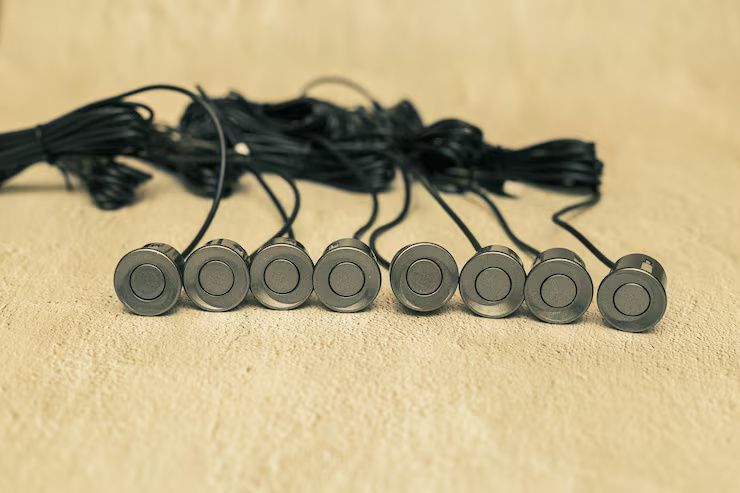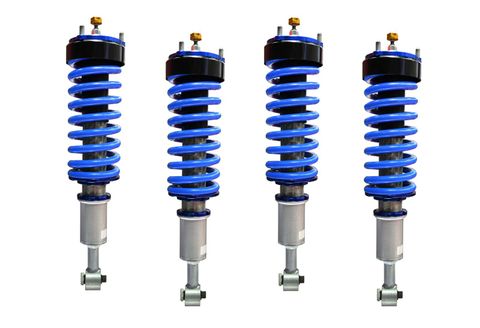Understanding Magnetic Wire Connectors: Overview, Key Information & Expert Advice
Magnetic wire connectors are devices designed to link electrical wires using magnetic force instead of traditional twisting, clamping, or crimping methods. They are part of a wider shift in electrical wiring systems aimed at simplifying connections, improving wiring accuracy, and enhancing overall safety. These connectors typically use embedded magnets and conductive elements to create secure, quick-attach connections that support stable electrical flow.
The concept exists because electrical installations increasingly demand methods that reduce wiring errors, enable rapid assembly, and enhance reliability. As technology expands across residential, industrial, and commercial environments, the need for safer and more efficient wire connection methods becomes more relevant. Magnetic connectors fit into this trend by providing a standardized and user-friendly approach within modern wiring networks.
They are used in applications ranging from home wiring standards to industrial electrical engineering, low-voltage systems, modular electronics, and prototype development. Their ability to streamline connections also supports emerging fields such as smart home setups, sensor systems, and portable electrical devices.
Importance
Magnetic wire connectors matter because they address recurring challenges associated with traditional wiring methods. For general users, technicians, and engineers, they reduce the likelihood of loose connections that often lead to performance issues or wiring faults. They also offer a cleaner and faster approach, helping maintain consistency in wiring projects.
They are especially useful in:
-
Electrical engineering insights and research applications where consistent testing interfaces are needed
-
Modular electrical design that requires repeated connecting and disconnecting
-
Smart home integration where simpler connectors improve installation accuracy
-
Industrial wiring safety initiatives that aim to reduce manual errors
-
Prototype development environments where rapid changes to wiring layouts are common
Magnetic connectors solve problems such as wiring fatigue, over-tightened terminals, or inconsistent contact points. Their ability to maintain a reliable mechanical hold without complex tools helps users streamline workflows and reduce wiring-related challenges in both small and large projects.
Recent Updates
The past year has seen several developments in magnetic connector technology, particularly as electrical systems continue to evolve. Many updates have been focused on stability, safety refinement, and improved conductivity. Below are notable trends and updates observed from 2024 to late 2025:
-
2024–2025: Increased use in modular electronics
Manufacturers have highlighted magnetic wire connectors for board-to-wire and module-to-module applications, supporting flexible design layouts. -
June 2024: Improved internal contact materials
Several brands introduced enhanced conductive alloys aimed at increasing current stability and durability. -
Early 2025: Wider adoption in home wiring standards
Discussions within electrical engineering forums have shifted toward evaluating magnetic connectors for small-scale residential applications, especially in low-voltage and accessory wiring. -
2025: Growing demand within renewable energy components
Some solar accessory manufacturers have explored magnetic connectors for small testing points and sensor wiring, contributing to easier maintenance.
Overall, the trend shows growing acceptance in engineering groups and electronics-focused industries. While not a universal replacement for traditional connectors, magnetic designs continue to gain relevance due to their adaptability.
Laws or Policies
Magnetic wire connectors operate within broader electrical wiring guidelines, safety codes, and compliance rules. While most countries do not have magnetic-specific regulations yet, these connectors must meet the same standards applied to conventional connectors. Key regulatory areas affecting this topic include:
-
National electrical wiring regulations
Most regions, including the United States (NEC), the United Kingdom (BS 7671), Canada (CEC), Australia/New Zealand (AS/NZS 3000), and India (National Electrical Code – 2023 revision), require all connectors to meet general safety and performance specifications. -
Electrical installation compliance guidelines
These policies focus on durability, conductor compatibility, insulation safety, mechanical strength, and temperature resistance. -
Testing and certification frameworks
Standards such as IEC, UL, and IS require connectors to undergo assessments for:-
Current carrying capability
-
Thermal and mechanical endurance
-
Material safety and insulation strength
-
Secure contact reliability
-
-
Regional building codes
Magnetic connectors used in fixed installations must align with national wiring standards and materials regulations for homes, workplaces, and industrial facilities. -
Environmental guidelines
Compliance with RoHS and relevant environmental rules ensures the materials used in magnetic connectors do not include restricted substances.
These regulations together shape how magnetic wire connectors can be designed, used, or incorporated into wiring systems across different regions.
Tools and Resources
Several tools, platforms, and resources help users understand magnetic wiring systems and related electrical topics. These are useful for general learning, planning, or reference in projects involving wiring configuration, connector selection, or electrical analysis.
Technical Reference Tools
-
IEC Standards Library – International guidelines for electrical components
-
UL Certification Database – Tool for checking safety certifications
-
IS/IEC Electrical Codes (India) – Compliance documentation for wiring materials
Design and Calculation Resources
-
Electrical Wiring Load Calculator – For estimating wiring requirements
-
Voltage Drop Calculator (online) – Helps assess conductor performance
-
Wire Gauge Selection Tool – Guides users on choosing conductor sizes
Learning Platforms
-
NPTEL Electrical Engineering modules
-
Coursera electrical fundamentals courses
-
MIT OpenCourseWare – Circuits and Electronics
Diagrams and Planning Tools
-
Electrical schematic creators (e.g., Fritzing, CircuitLab)
-
Wiring diagram templates on reliable engineering websites
These resources help both beginners and experienced users gain clarity on wiring methods, material selection, safety requirements, and best practices related to electrical systems.
Table: Traditional Connectors vs Magnetic Wire Connectors
| Feature | Traditional Connectors (Twist/Crimp) | Magnetic Wire Connectors |
|---|---|---|
| Installation Method | Manual twisting or tool-based crimping | Magnetic alignment and contact plates |
| Reusability | Limited | High |
| Consistency | Depends on manual skill | Standardized |
| Application | Broad household and industrial use | Growing in modular, low-voltage, and electronics sectors |
| Wiring Accuracy | Variable | Improved through guided alignment |
| Mechanical Stress | Higher due to twisting | Lower due to minimal force |
FAQs
1. What are magnetic wire connectors used for?
They are used to connect electrical wires through magnetically aligned contact points. They are commonly used in modular electronics, low-voltage systems, smart home devices, and prototype development environments.
2. Are magnetic wire connectors safe for electrical applications?
Yes, when they meet standard electrical safety requirements such as UL, IEC, or regional wiring codes. They must be used in appropriate environments and within the specifications defined by regulatory guidelines.
3. Do magnetic connectors replace traditional connectors?
Not entirely. They serve as an alternative in selected wiring applications—particularly where quick attachment, modularity, or testing convenience is required. Traditional connectors remain the primary choice for high-voltage and fixed infrastructure wiring.
4. Can magnetic wire connectors handle everyday home wiring?
They can be used in certain low-voltage or accessory installations if they comply with local electrical rules. However, widespread adoption in full home wiring systems is still emerging.
5. What should users check before selecting a magnetic connector?
Key factors include:
-
Voltage and current compatibility
-
Material quality
-
Safety certifications
-
Environmental and temperature tolerance
-
Suitability for the specific wiring layout
Conclusion
Magnetic wire connectors represent an evolving approach in electrical wiring, offering simplified installation, improved consistency, and adaptability for modern electrical systems. Their role continues to grow in electronics, smart technologies, prototype environments, and modular wiring frameworks. While they remain subject to the same compliance and safety guidelines as conventional connectors, their usability and potential benefits contribute to broader advancements in electrical engineering and wiring design.
As new updates, improved materials, and regulatory discussions continue into 2025 and beyond, magnetic wire connectors are likely to play an increasingly recognized role in certain segments of electrical technology. This guide provides a clear and factual overview to help readers understand their purpose, relevance, and practical considerations within today’s wiring landscape.





